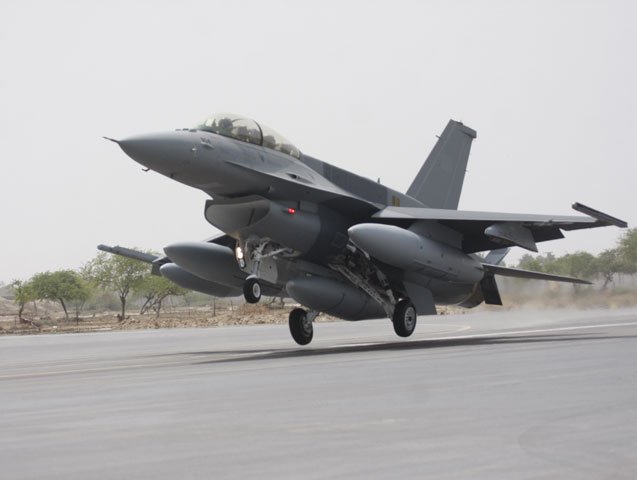
Lockheed Martin, which builds Pakistan’s beloved F-16 fighter jets, has offered to completely shift the manufacturing of this aircraft from Texas to India. The arrangement is subject to India agreeing to buy first 100 F-16s (Block 70-72) - the most advanced version of the fighter jet. “We make it in India, for India and then we make it in India and export to the world. If the initial orders are not there, it might not work for the industry,’’ an official for the Lockheed Martin had stated.
Turkey to modernise Pakistan’s F-16s
The proposed jet - already titled F-16IN - is being offered with a new radar system, stealth detection and threat detection capability. While F-16s in general have a smaller radar cross-section, the new block won’t have stealth capability.
If India chooses F-16s over other options, it could be a blow to Pakistan. Pakistan Air Force has been flying F-16s since the 1980s and though it has other multirole jets in its fleet, F-16s have been a crucial part of the country’s air defence mechanism. With India becoming the main manufacturer of the fighter jet, it could create hindrances for Pakistan to acquire the aircraft and its spare parts if not completely choke the supply.
Good news for Pakistan
India has not yet decided whether it seeks Saab Group’s JAS 39 Gripen or F-16 (Block 70-72) to upgrade its air defence. Given the urgency to modernise the fleet, the Indian Air Force may choose Sweden’s Gripen jets with the objective of customising to its future needs better over widely popular F-16s. The Gripen system will be alien to both Pakistan and China and it will give India a perceived edge over its regional rivals.
Blow to Pakistan? India could become next F-16 hub
Also, even if we assume Lockheed Martin is the victor, India may not have its first F-16IN delivered before 2022. Installation of the plant will take a few months. Then, it takes 36 months to deliver the first units. The total number of units per year depends on the number of assembly lines. Meanwhile, the cumbersome process of hiring and training the local manpower must be taken into account to ensure Modi’s envisaged Make-in-India goal.
Additionally, there’s the Trump factor. Will the next US administration let Lockheed Martin and other mega corporations invest billions of dollars in India and make Americans jobless? Prima facie, US President-elect Donald J Trump has categorically stated that the country was passing through the “greatest jobs theft” in the history of the world by nations such as India, China, Mexico and Singapore. He is already upping the ante for US corporations to stem outward flow of jobs. Carrier, an air-conditioner manufacturer, was the first one to attract the president-elect’s attention against investing in Mexico. Meanwhile, the automobile industry giant received an explicit threat to big border tax on vehicle manufactured at foreign plants. Ford scrapped plans to build a $1.6 billion plant in Mexico. If Lockheed Martin relocates F-16 manufacturing to India, over 2,000 Americans will be losing jobs in Fort Worth unless the company manages to absorb them in fledging F-35 program on the same campus.
Trump’s protectionism comes in direct conflict with Modi’s Make-in-India initiative. In Lockheed Martin’s case, the Bharatiya Janata Party-led government’s reclusive policy promises less to the foreign investor while seeking the lion’s share: “self-reliance, indigenisation, technology upgrade and achieving economies of scale including development of capabilities for exports in the defence sector”.
Given these possible dangers, anxiety is soaring high in India with its largest entrepreneurial body - Associated Chambers of Commerce of India – issuing the following statement: "India needs to watch out and must build bridges with the upcoming American administration and assuage concerns about American jobs”.
Lockheed’s prospects ahead
During the Obama tenure, US-India bilateral trade has grown from $19 billion in 2009-2010 to over $120 billion in 2015, say official estimates. Last year, proponents of Make-in-India were hoping to boost the bilateral trade to $500 billion.
India to have 'eye in the sky' to spy on Pakistan, China
The country enjoys impressive support on both sides of the isle in Congress as well as Senate. But with Trump in the picture now, it’s obvious that the Obama administration’s emphasis on strengthening partnership with India won’t escape uncontested.
Delhi must be preparing for hard bargains and lobbying in Washington and given these hurdles, it might like to wait for a more suitable time and even more modern fighter aircraft for the Lockheed Martin to produce in India.
Naveed Ahmad is a Pakistani investigative journalist and academic with extensive reporting experience in the Middle East and North Africa. He is based in Doha and Istanbul and tweets @naveed360

1729161093-0/liam-(4)1729161093-0-165x106.webp)






1731666526-0/Express-Tribune-(9)1731666526-0-270x192.webp)
1731668520-0/Express-Tribune-(11)1731668520-0-270x192.webp)







COMMENTS (31)
Comments are moderated and generally will be posted if they are on-topic and not abusive.
For more information, please see our Comments FAQ